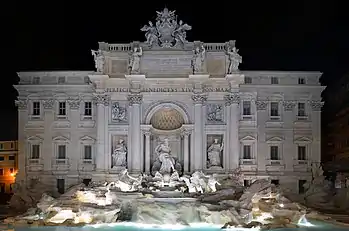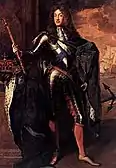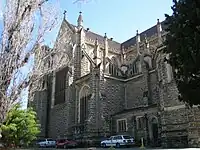Introduction The Catholic Church, also known as the Roman Catholic Church, is the largest Christian church, with 1.378 billion baptized Catholics worldwide It is among the world's oldest and largest international institutions, and has played a prominent role in the history and development of Western civilization. The church consists of 24 sui iuris churches, including the Latin Church and 23 Eastern Catholic Churches, which comprise almost 3,500 dioceses and eparchies located around the world. The pope, who is the bishop of Rome, is the chief pastor of the church. The Diocese of Rome, known as the Holy See, is the central governing authority of the church. The administrative body of the Holy See, the Roman Curia, has its principal offices in Vatican City, a small independent city-state enclave within the Italian capital city of Rome, of which the pope is head of state. The core beliefs of Catholicism are found in the Nicene Creed. The Catholic Church teaches that it is the one, holy, catholic and apostolic church founded by Jesus Christ in his Great Commission, that its bishops are the successors of Christ's apostles, and that the pope is the successor to Saint Peter, upon whom primacy was conferred by Jesus Christ. It maintains that it practises the original Christian faith taught by the apostles, preserving the faith infallibly through scripture and sacred tradition as authentically interpreted through the magisterium of the church. The Roman Rite and others of the Latin Church, the Eastern Catholic liturgies, and institutes such as mendicant orders, enclosed monastic orders and third orders reflect a variety of theological and spiritual emphases in the church. Of its seven sacraments, the Eucharist is the principal one, celebrated liturgically in the Mass. The church teaches that through consecration by a priest, the sacrificial bread and wine become the body and blood of Christ. The Virgin Mary is venerated as the Perpetual Virgin, Mother of God, and Queen of Heaven; she is honoured in dogmas and devotions. Catholic social teaching emphasizes voluntary support for the sick, the poor, and the afflicted through the corporal and spiritual works of mercy. The Catholic Church operates tens of thousands of Catholic schools, universities and colleges, hospitals, and orphanages around the world, and is the largest non-government provider of education and health care in the world. Among its other social services are numerous charitable and humanitarian organizations. (Full article...) Selected article  Pope Benedict XIV promulgated Vix Pervenit in 1745. Vix Pervenit: On Usury and Other Dishonest Profit was an encyclical, promulgated by Pope Benedict XIV on November 1, 1745, which condemned the practice of charging interest on loans as usury. Because the encyclical was addressed to the Bishops of Italy, it is generally not considered ex cathedra. The Holy Office applied the encyclical to the whole of the Roman Catholic Church on July 29, 1836, during the reign of Pope Gregory XVI. The encyclical codified Church teachings which date back to early ecumenical councils, at a time when scholastic philosophy (which did not regard money as a productive input) was increasingly coming into conflict with capitalism. Though never formally retracted, the encyclical's relevance has faded as the Church retreated from actively enforcing its social teachings in the financial sphere, and as the practice of charging interest on loans became almost universally accepted—legally and ethically.
Selected image  Credit: LivioAndronico The Trevi Fountain is the largest — standing 25.9 meters (85 feet) high and 19.8 meters (65 feet) wide — and most ambitious of the Baroque fountains of Rome. Competitions had become the rage during the Baroque era to design buildings, fountains, and even the Spanish Steps. In 1730 Pope Clement XII organized a contest in which Nicola Salvi initially lost to Alessandro Galilei — but due to the outcry in Rome over the fact that a Florentine won, Salvi was awarded the commission anyway. Work began in 1732, and the fountain was completed in 1762, long after Clement's death, when Pietro Bracci's 'Neptune' was set in the central niche. Selected biography  James II of England James II and VII (14 October 1633 – 16 September 1701)was King of England, King of Scots, and King of Ireland from 6 February 1685 to 11 December 1688. He was the last Roman Catholic monarch to reign over the Kingdoms of England, Scotland, and Ireland. Many of his subjects distrusted his religious policies and autocratic tendencies, leading a group of them to depose him in the Glorious Revolution in 1688. He was replaced not by his Roman Catholic son, James Francis Edward, but by his Protestant daughter and son-in-law, Mary II and William III, who became joint rulers in 1689. James made one serious attempt to recover his crowns, when he landed in Ireland in 1689. After his defeat at the Battle of the Boyne in the summer of 1690, James returned to France, living out the rest of his life under the protection of his cousin and ally, King Louis XIV.
Did you know...
Related portalsFeast Day of January 17 
Selected quote  Eusebius of Caesarea
News

Subcategories Catholic Church Catholic Church by city Catholic Church by continent Catholic Church by country Catholic Church-related lists Catholic particular churches sui iuris Latin Church Eastern Catholic Churches Catholic bibles Buildings and structures of the Catholic Church Catholics Catholic charities Catholic culture Catholic dioceses Ecclesiastical polity of the Catholic Church Catholic ecumenical and interfaith relations History of the Catholic Church Catholic hymns Catholic liturgy Catholic missions Catholic orders and societies Catholic Church organisation Catholic organizations Popes Catholic Church in popular culture Roman Catholic saints Catholic spirituality Catholic studies Catholic theology and doctrine Venerated Catholics Catholic Church portals Outlines of the Catholic Church Catholic Church stubs Topics
The Holy Bible:
Particular Churches (grouped by liturgical rite):
Things you can do
External resourcesWikiProjects
Associated WikimediaThe following Wikimedia Foundation sister projects provide more on this subject:
Discover Wikipedia using portals
|
.jpg.webp)



.svg.png.webp)
.svg.png.webp)




